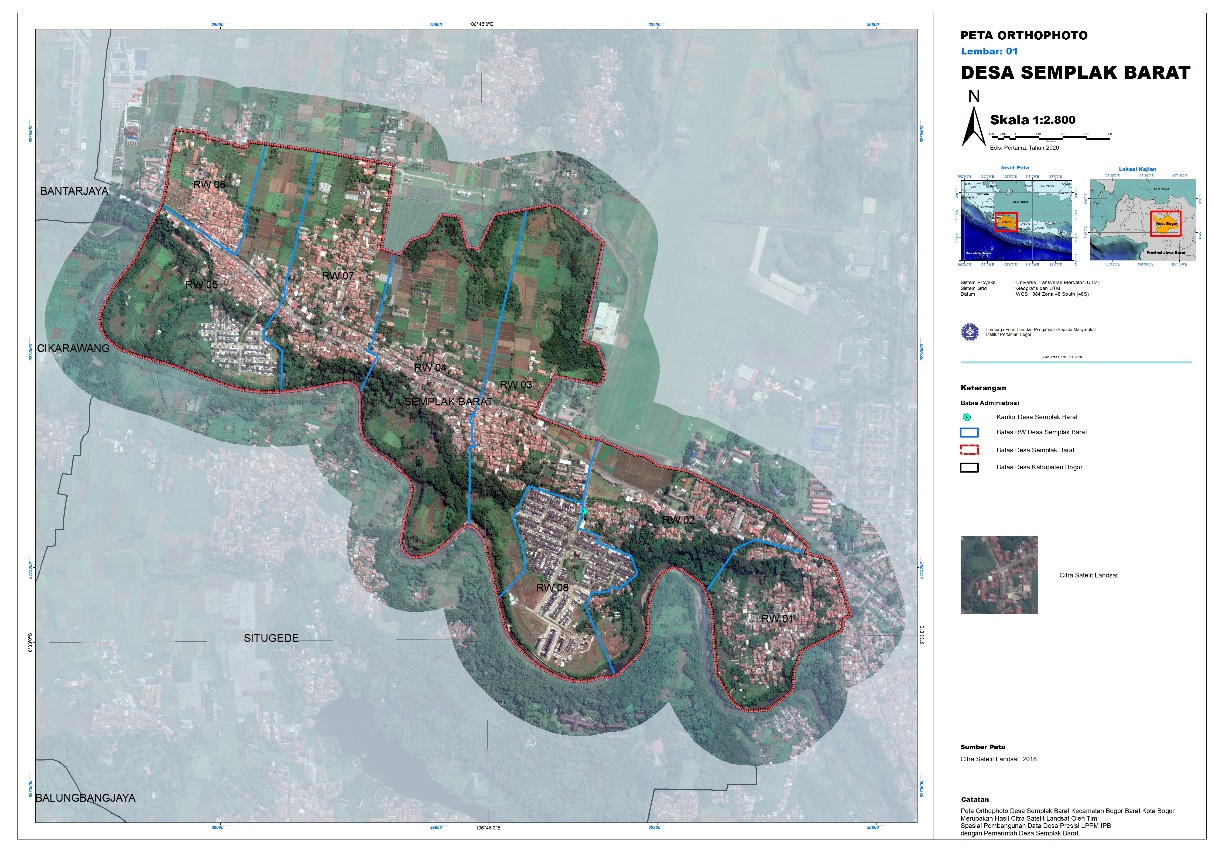Analisis Kesenjangan Digital Tingkat Pertama dan Daya Beli Komunikasi Kelas Sosial di Desa Semplak Barat Kabupaten Bogor
Abstract
The digital divide, as a result of the development of the digital age and the 4.0 industrial revolution, has become an important issue even at the international level. Ragnedda attributes the digital divide to an individual's social class as a preceding factor. This article aims to analyze the first-order digital divide that occurs in each social class, as well as consider the purchasing power of communication in West Semplak Village. The method used in writing this article is through secondary data analysis using information contained in the Data Desa Presisi (DDP). The results of this study confirm that: (1) There is a difference in the first-level digital divide, where the order is the middle class with a percentage of 10.00%, followed by the lower class with 7.10%, and the upper class with 1.91%; (2) Judging from the average value of communication costs, the upper class has a cost of Rp232,719, which is greater than the class below; (3) When considering the proportion of communication costs to income in each class, the order of the proportion of communication purchasing power from the largest is the lower class at 9.39%, followed by the middle class with 6.44%, and the upper class with 6.07%.
References
Ajrun, N. (2023). Bridging the Digital Divide Affecting Persons with Disabilities in Malaysia. International Journal of Disability, Development and Education, 70(4), 562–574. https://doi.org/10.1080/1034912X.2021.1901860
Arham, I., Sjaf, S., & Darusman, D. (2019). Strategi Pembangunan Pertanian Berkelanjutan di Pedesaan Berbasis Citra Drone. Jurnal Ilmu Lingkungan, 17, No 2 (2019), 245–255. https://doi.org/10.14710/jil.17.2.245-255
Arsyad, A. A., Sjaf, S., Gandi, R., Maulana, R., Wijayanta, I. M. P., Gunada, R. R., & Alfiyasin, T. A. (2021). Membangun Data Desa Presisi di Desa Semplak Barat, Kabupaten Bogor. Jurnal Pusat Inovasi Masyarakat (PIM), 3(1), Article 1.
Arsyad, A. A., Sjaf, S., Hakim, L., Salsabila, J., Putri, S. P., Maulidya, S. E., Mustakiman, M., & Vayumi, M. N. (2021). Membangun Data Desa Presisi di Desa Bantarjaya, Kabupaten Bogor. Jurnal Pusat Inovasi Masyarakat (PIM), 3(1), Article 1.
Aswin, A. dd, Ramadhan, A., Ludmuti, B. S., Romawan, D., & Kurniawan, M. A. (2022). Keberlangsungan Bisnis Pada Umkm Di Tengah Pandemi Covid 19. Prosiding Seminar Nasional Hukum, Bisnis, Sains Dan Teknologi, 2(1), Article 1.
Ayuningtyas, F. (2022). Perilaku Konsumen dalam Perspektif Ilmu Komunikasi. CV. Mitra Cendekia Media.
Calderón Gómez, D. (2019). Technological capital and digital divide among young people: An intersectional approach. Journal of Youth Studies, 22(7), 941–958. https://doi.org/10.1080/13676261.2018.1559283
Darmawan, B., & Cristiani, C. (2021). Reformasi Birokrasi Pemerintah Daerah. JURNAL MEDIA ADMINISTRASI, 3(1), Article 1.
Databoks. (2021). Sebanyak 56,7% Penduduk Indonesia Tinggal di Perkotaan pada 2020 | Databoks. https://databoks.katadata.co.id/datapublish/2021/08/18/sebanyak-567-penduduk-indonesia-tinggal-di-perkotaan-pada-2020
Dijk, J. A. G. M. van. (2005). The Deepening Divide: Inequality in the Information Society. SAGE Publications.
Faloye, S. T., & Ajayi, N. (2022). Understanding the impact of the digital divide on South African students in higher educational institutions. African Journal of Science, Technology, Innovation and Development, 14(7), 1734–1744. https://doi.org/10.1080/20421338.2021.1983118
Fauziyah, R. N. (2022, September 16). Perjalanan Revolusi Industri 1.0 Hingga 5.0. Best Seller Gramedia. https://gramedia.com/best-seller/perjalanan-revolusi-industri-1-0-hingga-5-0/
Febriani, N., & Dewi, W. W. A. (2019). Perilaku Konsumen di Era Digital: Beserta Studi Kasus. Universitas Brawijaya Press.
Gagné, T., & Brown, J. (2021). Socio-economic distribution of e-cigarette use among recent former regular smokers and current smokers at ages 25–26 in England. Addiction, 116(6), 1548–1557. https://doi.org/10.1111/add.15345
Hadiyanto, D., Mulyana, A., & Nuryana, N. (2022). Budaya Komunikasi Masyarakat Desa di Era Industri 4.0: Studi Kasus Desa Astanamukti Kabupaten Cirebon. Al-Adabiya: Jurnal Kebudayaan Dan Keagamaan, 17(2), Article 2. https://doi.org/10.37680/adabiya.v17i2.1880
Hamzah, H., & Yohanda, R. (2022). Problematika Orang Tua Dalam Mengajar Anak Di Rumah Pada Masa Pandemi Covid-19 Di Desa Sendayan Kecamatan Kampar Utara. Jurnal Kajian Ilmu Pendidikan (JKIP), 2(2), Article 2. https://doi.org/10.55583/jkip.v2i2.249
Hapsari, A. D., & Aulia, B. U. (2019). Tipologi Wilayah Peri Urban Kabupaten Sidoarjo Berdasarkan Aspek Fisik, Sosial, dan Ekonomi. Jurnal Teknik ITS, 7(2), C168–C172. https://doi.org/10.12962/j23373539.v7i2.34248
Hargittai, E., Piper, A. M., & Morris, M. R. (2019). From internet access to internet skills: Digital inequality among older adults. Universal Access in the Information Society, 18(4), 881–890. https://doi.org/10.1007/s10209-018-0617-5
Heeks, R. (2022). Digital inequality beyond the digital divide: Conceptualizing adverse digital incorporation in the global South. Information Technology for Development, 28(4), 688–704. https://doi.org/10.1080/02681102.2022.2068492
Jayanthi, R., & Dinaseviani, A. (2022). Kesenjangan Digital dan Solusi yang Diterapkan di Indonesia Selama Pandemi COVID-19. JURNAL IPTEKKOM (Jurnal Ilmu Pengetahuan & Teknologi Informasi), 24(2), Article 2. https://doi.org/10.17933/iptekkom.24.2.2022.187-200
Jayanti, M. A., & Jamil, A. M. M. (2020). Pemanfaatan Sistem Informasi Geografis Kolaboratif Pada Kawasan Rawan Bencana Banjir Di Wilayah Peri Urban Kota Malang. JPIG (Jurnal Pendidikan Dan Ilmu Geografi), 5(1), Article 1. https://doi.org/10.21067/jpig.v5i1.3852
Kurniawan, A. R. (2020). Tantangan Pengembangan Pariwisata Berbasis Masyarakat Pada Era Digital Di Indonesia (Studi Kasus Pengembangan Pariwisata Berbasis Masyarakat Di Pangalengan). Tornare: Journal of Sustainable and Research, 2(2), Article 2. https://doi.org/10.24198/tornare.v2i2.25418
Kusumawarta, E. P., & Sjaf, S. (2018). Pengorganisasian Komunitas oleh Inovator Pertanian untuk Kesejahteraan Masyarakat. Jurnal Sains Komunikasi dan Pengembangan Masyarakat [JSKPM], 2(6), Article 6. https://doi.org/10.29244/jskpm.2.6.731-744
Law, E. L.-C., Vostanis, P., & O’Reilly, M. J. (2022). Insights from impacts of the digital divide on children in five majority world countries during the COVID-19 pandemic. Behaviour & Information Technology, 0(0), 1–20. https://doi.org/10.1080/0144929X.2022.2141136
Lembani, R., Gunter, A., Breines, M., & Dalu, M. T. B. (2020). The same course, different access: The digital divide between urban and rural distance education students in South Africa. Journal of Geography in Higher Education, 44(1), 70–84. https://doi.org/10.1080/03098265.2019.1694876
Mabweazara, H. M. (2021). Towards reimagining the ‘digital divide’: Impediments and circumnavigation practices in the appropriation of the mobile phone by African journalists. Information, Communication & Society, 24(3), 344–364. https://doi.org/10.1080/1369118X.2020.1834602
Martínez-Domínguez, M., & Mora-Rivera, J. (2020). Internet adoption and usage patterns in rural Mexico. Technology in Society, 60, 101226. https://doi.org/10.1016/j.techsoc.2019.101226
Mayasari, F. (2022). Etnografi Virtual Fenomena Cancel Culture dan Partisipasi Pengguna Media terhadap Tokoh Publik di Media Sosial. Journal of Communication and Society, 1(01), Article 01. https://doi.org/10.55985/jocs.v1i01.15
Mazya, T. M. (2021). Transformasi dan Kesejahteraan Desa Digital; Telaah Perbandingan Komunitas Desa Pesisir dan Desa Dataran Tinggi di Kabupaten Banyuwangi. http://repository.ipb.ac.id/handle/123456789/112391
Media, K. C. (2020). 5 Manfaat Internet. KOMPAS.com. https://www.kompas.com/skola/read/2020/10/08/224859069/5-manfaat-internet
Mutsvairo, B., & Ragnedda, M. (2019). Mapping the Digital Divide in Africa: A Mediated Analysis. https://doi.org/10.5117/9789462986855
Oktavianoor, R. (2020). Kesenjangan Digital Akibat Kondisi Demografis di Kalangan Masyarakat Rural. Journal of Information and Library Science, 11(1).
Otioma, C., Madureira, A. M., & Martinez, J. (2019). Spatial analysis of urban digital divide in Kigali, Rwanda. GeoJournal, 84(3), 719–741. https://doi.org/10.1007/s10708-018-9882-3
Ragnedda, M. (2017). The Third Digital Divide: A Weberian Approach to Digital Inequalities (1st edition). Routledge.
Rakasiwi, L. S., & Kautsar, A. (2021). Pengaruh Faktor Demografi dan Sosial Ekonomi terhadap Status Kesehatan Individu di Indonesia. Kajian Ekonomi Dan Keuangan, 5(2), Article 2. https://doi.org/10.31685/kek.v5i2.1008
Rasyid, A. (2019). Perilaku Konsumtif Dalam Perspektif Agama Islam. Yurisprudentia: Jurnal Hukum Ekonomi, 5(2), Article 2. https://doi.org/10.24952/yurisprudentia.v5i2.2128
Romadhan, A. N., & Purwandari, E. (2020). Peran sanggar regoling ma’rifat dalam penanaman karakter pada anak di era digital. Indigenous: Jurnal Ilmiah Psikologi, 5(1), Article 1. https://doi.org/10.23917/indigenous.v5i1.11144
Rosyidi, A. Z., & Aulia, B. U. (2020). Pola Keterkaitan Kota-Desa dari Segi Pergerakan Orang Antara Kota Mojokerto dengan Wilayah Peri Urban di Kabupaten Mojokerto. Jurnal Teknik ITS, 8(2), C96–C101. https://doi.org/10.12962/j23373539.v8i2.48393
Setiadi, N. J. (2019). Perilaku Konsumen: Perspektif Kontemporer pada Motif, Tujuan, dan Keinginan Konsumen Edisi Ketiga. Prenada Media.
Sjaf, S., Arsyad, A. A., Mahardika, A. R., Gandi, R., Elson, L., Hakim, L., Barlan, Z. A., Utami, R. B., Muhammad, B., Amongjati, S. A., Sampean, & Nugroho, D. A. (2022). Partnership 4.0: Smallholder farmer partnership solutions. Heliyon, 8(12), e12012. https://doi.org/10.1016/j.heliyon.2022.e12012
Sjaf, S., Sampean, Arsyad, A. A., Elson, L., Mahardika, A. R., Hakim, L., Amongjati, S. A., Gandi, R., Barlan, Z. A., Aditya, I. M. G., Maulana, S. A. B., & Rangkuti, M. R. (2022). Data Desa Presisi: A new method of rural data collection. MethodsX, 9, 101868. https://doi.org/10.1016/j.mex.2022.101868
Suri, D. (2019). Pemanfaatan Media Komunikasi dan Informasi dalam Perwujudan Pembangunan Nasional. Jurnal Komunikasi Pembangunan, 17(2), Article 2. https://doi.org/10.46937/17201926848
Wahyudi, M. R., & Wahyudin, W. (2022). Pengaruh Desentralisasi Fiskal Terhadap Pertumbuhan Ekonomi Kabupaten/Kota di Sulawesi Selatan Tahun 2016–2020. Seminar Nasional Official Statistics, 2022(1), Article 1. https://doi.org/10.34123/semnasoffstat.v2022i1.1409







